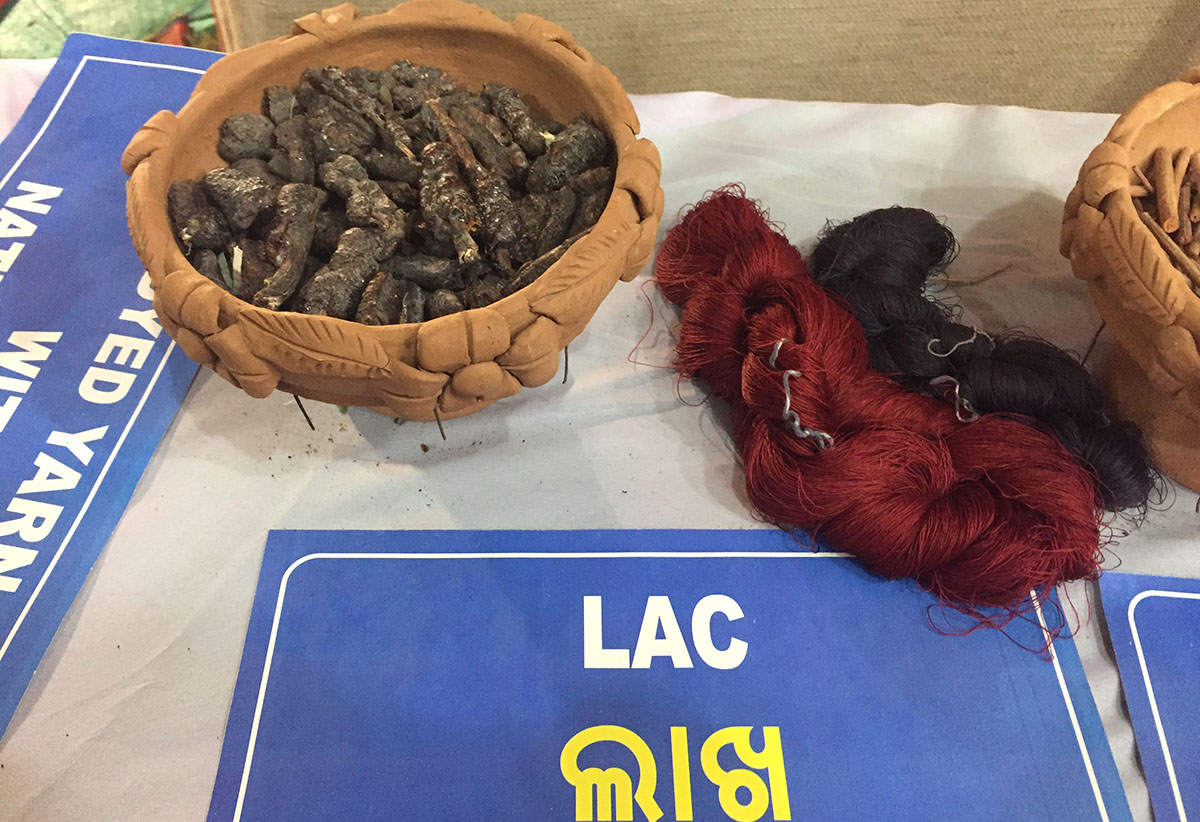ARTICLE
Lac Dye
A water-soluble colourant, lac dye is usually red to burgundy in colour and is extracted from a resin produced by the insects Kerria lacca and Laccifer lacca. Lac dye is used for dyeing wool, silk, and colouring food. The word “lac” derives from the Sanskrit laksha, meaning “100,000”, referring to the large number of insects typically needed for making the resin, dye and their byproducts. Lac was known in the subcontinent from at least the first millennium BCE. It is mentioned in three texts from the period: the Atharvaveda, the Astadhyayi of Panini, and the Mahabharata, where the Pandavas are almost killed in a flammable building made of lac resin and ghee. A dye recipe for lac is found in the Nayadhamma Kaha, a fifth century CE Jain text. Lac dye has been used in woolen Persian carpets since the eighth century, and was introduced to Europe in the late sixteenth century through Portuguese agents in India.
Lac insects have a parasitic relationship with trees such as the Indian jujube (Ziziphus Mauritiana), kusum (Schleichera oleosa) and palash (Butea monosperma). The insects infest the trees by piercing the bark and drawing nutrients from the interior. The resin secreted by the insects can be processed into shellac. This can be shaped into jewellery or used to finish wooden surfaces, which is why lacquer was originally made with lac. Lac insects are cultivated by tying an already infested branch or twig to a tree, and periodically harvesting these as the colony expands across the tree. Today, lac is cultivated primarily in the states of Jharkhand, Chhattisgarh, Madhya Pradesh, Bihar, Odisha and West Bengal, often by adivasi populations in forested areas.
Lac dye gets its red colour from the laccaic acid present in the hemolymph or body fluid of the lac insect. It is obtained by separating the insects from the branch and the resin, crushing them and dissolving the result in an alkaline solution. This solution is then acidified and treated with chalk, which reforms the dissolved dye as a sediment. The sediment is allowed to settle for a week. The resultant crystallised form of lac dye is then strained out and added to a hot dyebath while still damp. A mordant, ideally tin chloride, and the fabric to be dyed are added to the bath and allowed to sit for an hour as it simmers. After the colour has reached a sufficiently deep shade, the cloth is removed, rinsed and allowed to dry.
Until the invention of synthetic aniline-based dyes in the late nineteenth century, lac dye was the primary product of lac cultivation in India. It continues to be used in a minor capacity for handicraft textiles, and more commonly as a natural food colourant.
Bibliography
Our website is currently undergoing maintenance and re-design, due to which we have had to take down some of our bibliographies. While these will be re-published shortly, you can request references for specific articles by writing to hellomapacademy@map-india.org.








